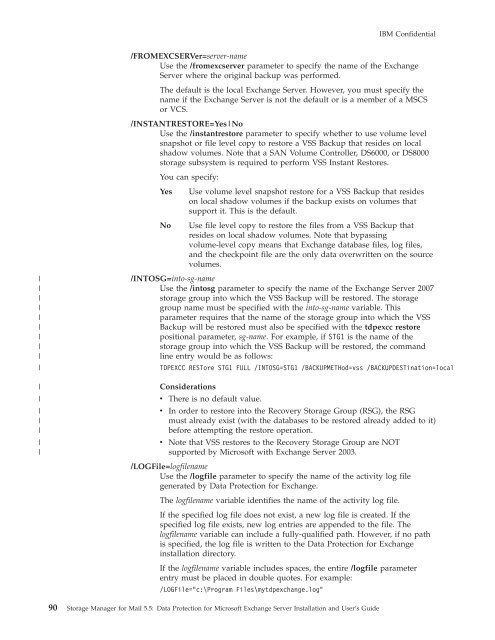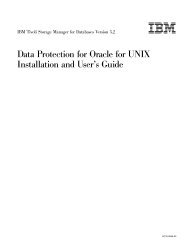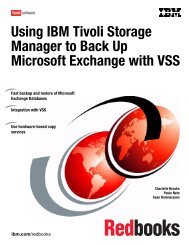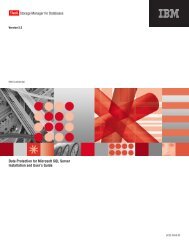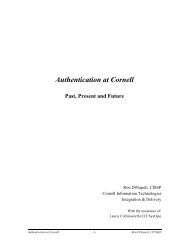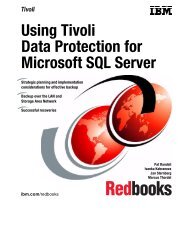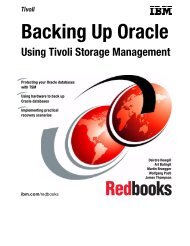Installation and User's Guide - Services and Support
Installation and User's Guide - Services and Support
Installation and User's Guide - Services and Support
Create successful ePaper yourself
Turn your PDF publications into a flip-book with our unique Google optimized e-Paper software.
IBM Confidential|||||||||||||||||/FROMEXCSERVer=server-nameUse the /fromexcserver parameter to specify the name of the ExchangeServer where the original backup was performed.The default is the local Exchange Server. However, you must specify thename if the Exchange Server is not the default or is a member of a MSCSor VCS./INSTANTRESTORE=Yes|NoUse the /instantrestore parameter to specify whether to use volume levelsnapshot or file level copy to restore a VSS Backup that resides on localshadow volumes. Note that a SAN Volume Controller, DS6000, or DS8000storage subsystem is required to perform VSS Instant Restores.You can specify:Yes Use volume level snapshot restore for a VSS Backup that resideson local shadow volumes if the backup exists on volumes thatsupport it. This is the default.No Use file level copy to restore the files from a VSS Backup thatresides on local shadow volumes. Note that bypassingvolume-level copy means that Exchange database files, log files,<strong>and</strong> the checkpoint file are the only data overwritten on the sourcevolumes./INTOSG=into-sg-nameUse the /intosg parameter to specify the name of the Exchange Server 2007storage group into which the VSS Backup will be restored. The storagegroup name must be specified with the into-sg-name variable. Thisparameter requires that the name of the storage group into which the VSSBackup will be restored must also be specified with the tdpexcc restorepositional parameter, sg-name. For example, if STG1 is the name of thestorage group into which the VSS Backup will be restored, the comm<strong>and</strong>line entry would be as follows:TDPEXCC RESTore STG1 FULL /INTOSG=STG1 /BACKUPMETHod=vss /BACKUPDESTination=localConsiderationsv There is no default value.v In order to restore into the Recovery Storage Group (RSG), the RSGmust already exist (with the databases to be restored already added to it)before attempting the restore operation.v Note that VSS restores to the Recovery Storage Group are NOTsupported by Microsoft with Exchange Server 2003./LOGFile=logfilenameUse the /logfile parameter to specify the name of the activity log filegenerated by Data Protection for Exchange.The logfilename variable identifies the name of the activity log file.If the specified log file does not exist, a new log file is created. If thespecified log file exists, new log entries are appended to the file. Thelogfilename variable can include a fully-qualified path. However, if no pathis specified, the log file is written to the Data Protection for Exchangeinstallation directory.If the logfilename variable includes spaces, the entire /logfile parameterentry must be placed in double quotes. For example:/LOGFile="c:\Program Files\mytdpexchange.log"90 Storage Manager for Mail 5.5: Data Protection for Microsoft Exchange Server <strong>Installation</strong> <strong>and</strong> User’s <strong>Guide</strong>


